Potrebujeme váš súhlas na využitie jednotlivých dát, aby sa vám okrem iného mohli ukazovať informácie týkajúce sa vašich záujmov. Súhlas udelíte kliknutím na tlačidlo „OK“.
ASTM D2937-10
Standard Test Method for Density of Soil in Place by the Drive-Cylinder Method
Automaticky preložený názov:
Štandardná skúšobná metóda pre Hustota pôdy na mieste Drive-valec Metóda
NORMA vydaná dňa 15.3.2010
Informácie o norme:
Označenie normy: ASTM D2937-10
Poznámka: NEPLATNÁ
Dátum vydania normy: 15.3.2010
Kód tovaru: NS-22011
Počet strán: 7
Približná hmotnosť: 21 g (0.05 libier)
Krajina: Americká technická norma
Kategória: Technické normy ASTM
Kategórie - podobné normy:
Zemní práce. Hloubicí práce. Budování základů. Podzemní práce
Anotácia textu normy ASTM D2937-10 :
Keywords:
compaction control, density testing, drive cylinder, drive cylinder test, field density, in-place density, plug sampler, quality control, subsurface sampler, surface sampler, unit weight, Backfill--testing, Subsurface investigation--soil/rock, Surface analysis--soil/rock/related materials, Unit weight, Compaction control, Compaction measurement--soils, Density--soil/rock/related materials, Drive cylinder test, Field density, In-place density (of soil), Plug sampler
Doplňujúce informácie
| Significance and Use | ||||||||||||||||||||||||
|
This test method can be used to determine the in-place density of soils which do not contain significant amounts of particles coarser than 4.75 mm (3/16 in.), and which can be readily retained in the drive cylinder. This test method may also be used to determine the in-place density of compacted soils used in construction of structural fill, highway embankments, or earth dams. When the in-place density is to be used as a basis for acceptance, the drive cylinder volumes must be as large as practical and not less than 850 cm3 (0.030 ft3 ). This test method is not recommended for use in organic or friable soils. This test method may not be applicable for soft, highly plastic, noncohesive, saturated or other soils which are easily deformed, compress during sampling, or which may not be retained in the drive cylinder. The use of this test method in soils containing particles coarser than 4.75 mm (3/16 in.) may result in damage to the drive cylinder equipment. Soils containing particles coarser than 4.75 mm (3/16 in.) may not yield valid results if voids are created along the wall of cylinder during driving, or if particles are dislodged from the sample ends during trimming. The general principles of this test method have been successfully used to obtain samples of some field compacted fine-grained soils having a maximum particle size of 4.75 mm (3/16 in.) for purposes other than density determinations, such as the testing for engineering properties. Note 1—Notwithstanding the statements on precision and bias contained in this standard: The precision of this test method is dependent on the competence of the personnel performing it and the suitability of the equipment and facilities used. Agencies which meet the criteria of Practice D3740 are generally considered capable of competent and objective testing. Users of this method are cautioned that compliance with Practice D3740 does not in itself assure reliable testing. Reliable testing depends on many factors; Practice D3740 provides a means of evaluating some of those factors. |
||||||||||||||||||||||||
| 1. Scope | ||||||||||||||||||||||||
|
1.1 This test method covers the determination of in-place density of soil by the drive-cylinder method. The test method involves obtaining a relatively intact soil sample by driving a thin-walled cylinder and the subsequent activities for the determination of in-place density. When sampling or in-place density is required at depth, Test Method D1587 should be used. 1.2 This test method is not appropriate for sampling organic soils which can compress upon sampling, very hard natural soils and heavily compacted soils which cannot be easily penetrated by the drive sampler, soils of low plasticity which will not be readily retained in the cylinder, or soils which contain appreciable amounts of gravel (particles coarser than 4.75 mm (3/16 in.)). The presence of particles coarser than 4.75 mm (3/16 in.) may introduce significant errors in density measurements by causing voids along the wall of the cylinder during driving, and when coarse materials have to be dislodged by the trimming of the sample obtained by the cylinder. 1.3 This test method is limited to the procedures necessary for obtaining specimens suitable for determining the in-place density and water content of certain soils. The procedures and precautions necessary for selecting locations and obtaining intact samples suitable for laboratory testing or otherwise determining engineering properties is beyond the scope of this test method. 1.4 The values stated in SI units are to be regarded as standard. The inch-pound units given in parentheses are mathematical conversions, which are provided for information purposes only and are not considered standard. 1.4.1 It is common practice in the engineering/construction profession to concurrently use pounds to represent both a unit of mass (lbm) and a unit of force (lbf). This implicitly combines two separate systems of units; that is, the absolute system and the gravitational system. It is scientifically undesirable to combine the use of two separate sets of inch-pound units within a single standard. As stated, this standard includes the gravitational system of inch-pound units and does not use/present the slug unit for mass. However, the use of balances or scales recording pounds of mass (lbm) or the recording of density in lbm/ft3 shall not be regarded as nonconformance with this standard. 1.5 All observed and calculated values shall conform to the guidelines for significant digits and rounding established in Practice D6026, unless superseded by this standard. 1.5.1 The procedures used to specify how data are collected/recorded or calculated in this standard are regarded as the industry standard. In addition, they are representative of the significant digits that generally should be retained. The procedures used do not consider material variation, purpose for obtaining the data, special purpose studies, or any considerations for the user's objectives; and it is common practice to increase or reduce significant digits of reported data to be commensurate with these considerations. It is beyond the scope of this standard to consider significant digits used in analysis methods for engineering design. 1.6 This standard does not purport to address all of the safety concerns, if any, associated with its use. It is the responsibility of the user of this standard to establish appropriate safety and health practices and determine the applicability of regulatory limitations prior to use. |
||||||||||||||||||||||||
| 2. Referenced Documents | ||||||||||||||||||||||||
|
Podobné normy:
Historická
1.11.2011
Historická
1.3.2008
Historická
1.5.2012
Historická
1.7.2008
Historická
15.11.2013
Historická
1.7.2008
Odporúčame:
Aktualizácia technických noriem
Chcete mať istotu, že používate len platné technické normy?
Ponúkame Vám riešenie, ktoré Vám zaistí mesačný prehľad o aktuálnosti noriem, ktoré používate.
Chcete vedieť viac informácií ? Pozrite sa na túto stránku.


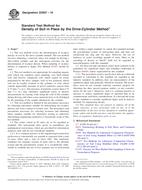
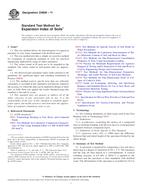 ASTM D4829-11
ASTM D4829-11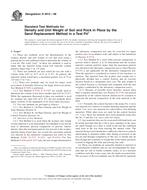 ASTM D4914-08
ASTM D4914-08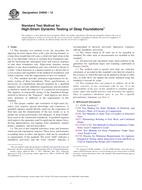 ASTM D4945-12
ASTM D4945-12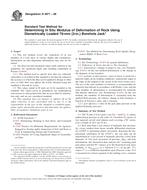 ASTM D4971-08
ASTM D4971-08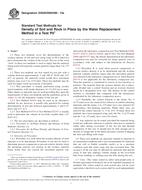 ASTM D5030/D5030M-13..
ASTM D5030/D5030M-13..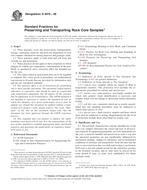 ASTM D5079-08
ASTM D5079-08
 Cookies
Cookies
